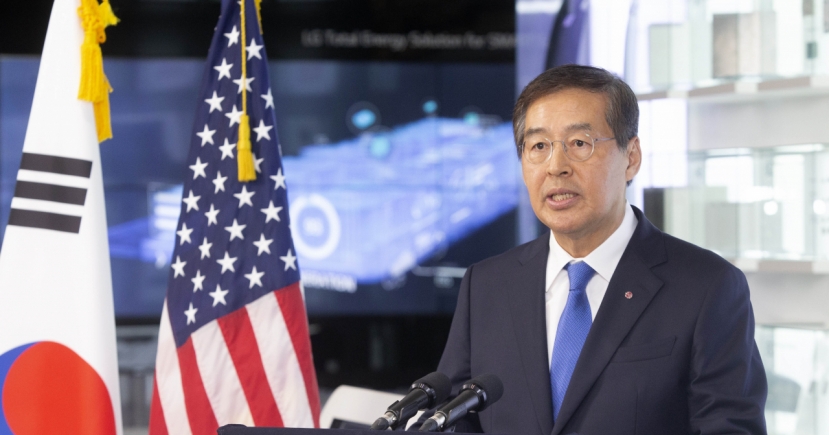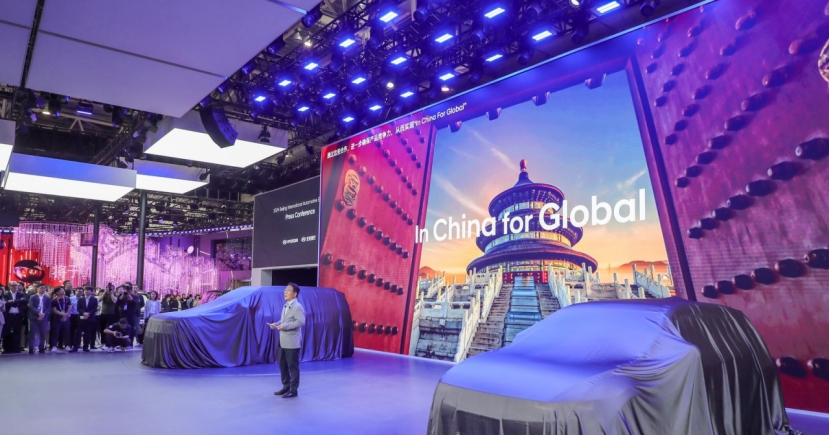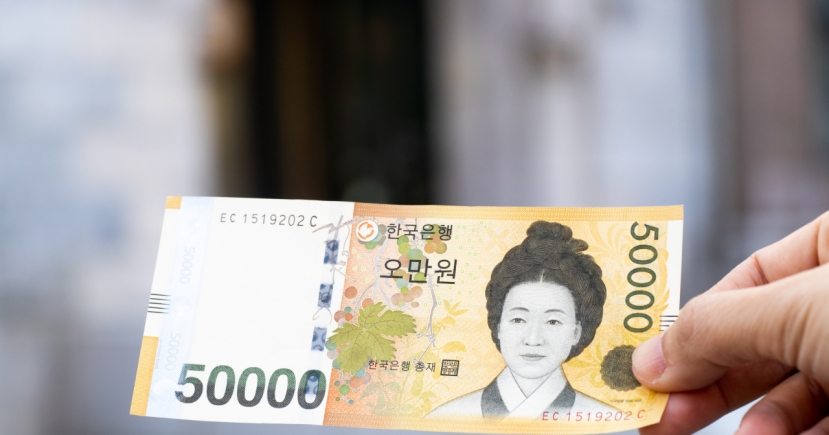Samsung
Samsung, LG battle again with flagship display panels at ISE
[THE INVESTOR] Samsung Electronics and LG Electronics have met again, this time on the battleground for high-end display panels with their flagship QLED and OLED panels, respectively.
At the Integrated Systems Europe 2017 that kicked off in Amsterdam on Tuesday, Samsung unveiled the quantum dot light-emitting diode Signage and light-emitting diode Signage IF series for the first time while LG stuck with its organic light-emitting diode brand.
The two previously sparred at the Consumer Electronics Show last month when Samsung ditched its super-ultrahigh definition brand it had used for the last two years and introduced the new QLED display during the event.
The QLED technology-powered display has 1 billion colors with greater accuracy, which the company says enables viewers to experience more detailed content delivered with deeper blacks, sharper whites and precise color hues.
“The QLED display panel is the world’s first that can realize color volume 100 percent in any situation,” the company said.
Samsung’s switch to QLED was viewed by industry watchers to be taking aim at its rival LG’s increasing market share in the premium TV market with its OLED TVs.
Samsung has reportedly failed to mass produce OLED panels for TVs while LG succeeded with the development of white OLED technology.
Unshaken by the archrival’s move, LG introduced a lineup of OLED Signage series, featuring various types of OLED display panel at the four-day event.
LG boasts flexible, two-side and in-glass OLED Signage panels as well as ultra-stretch LCD panel.
Highlighting the thinness of the OLED panel, LG showed off the flexible model that can be folded in any forms that users want. The company displayed a structure made of eight 55-inch (140 centimeters) flexible OLED Signage panels.
The ultra-stretch LCD panel can be useful for public advertisement boards at airports, transportation systems and banks, enabling users to extend the panel’s width or length on their own, according to the company.
“OLED has not only absolute quality of definition but also great merit of fitting in any space,” said Kwon Soon-hwang, vice president of industrial display division at LG.
Competition between the two Korean tech firms’ vying over their flagship display technologies is expected to intensify as the two brace for the global premium TV market.
However, which display technology will lead the market remains unclear.
While Samsung’s QLED display is known for outstanding brightness, color volume and cost effectiveness, it falls behind the OLED display in da
rkness.
On the other hand, the OLED display features full color volume and thinness. But it is still costly to mass produce.
“It is true LG is ahead of Samsung with the OLED technology,” said an industrial source, who asked to remain unnamed.
Samsung previously featured Active Matrix OLED technology for mobile devices, but it has failed to enlarge the size of the panels for TVs, the source explained.
“That is why Samsung has come up with QLED, which is a developed version of LCD, in order to compete with LG’s OLED in terms of costs,” he added.
By Song Su-hyun/The Korea Herald (song@heraldcorp.com)
At the Integrated Systems Europe 2017 that kicked off in Amsterdam on Tuesday, Samsung unveiled the quantum dot light-emitting diode Signage and light-emitting diode Signage IF series for the first time while LG stuck with its organic light-emitting diode brand.
The two previously sparred at the Consumer Electronics Show last month when Samsung ditched its super-ultrahigh definition brand it had used for the last two years and introduced the new QLED display during the event.
The QLED technology-powered display has 1 billion colors with greater accuracy, which the company says enables viewers to experience more detailed content delivered with deeper blacks, sharper whites and precise color hues.
“The QLED display panel is the world’s first that can realize color volume 100 percent in any situation,” the company said.
Samsung’s switch to QLED was viewed by industry watchers to be taking aim at its rival LG’s increasing market share in the premium TV market with its OLED TVs.
Samsung has reportedly failed to mass produce OLED panels for TVs while LG succeeded with the development of white OLED technology.
Unshaken by the archrival’s move, LG introduced a lineup of OLED Signage series, featuring various types of OLED display panel at the four-day event.
LG boasts flexible, two-side and in-glass OLED Signage panels as well as ultra-stretch LCD panel.
Highlighting the thinness of the OLED panel, LG showed off the flexible model that can be folded in any forms that users want. The company displayed a structure made of eight 55-inch (140 centimeters) flexible OLED Signage panels.
The ultra-stretch LCD panel can be useful for public advertisement boards at airports, transportation systems and banks, enabling users to extend the panel’s width or length on their own, according to the company.
“OLED has not only absolute quality of definition but also great merit of fitting in any space,” said Kwon Soon-hwang, vice president of industrial display division at LG.
Competition between the two Korean tech firms’ vying over their flagship display technologies is expected to intensify as the two brace for the global premium TV market.
However, which display technology will lead the market remains unclear.
While Samsung’s QLED display is known for outstanding brightness, color volume and cost effectiveness, it falls behind the OLED display in da
rkness.
On the other hand, the OLED display features full color volume and thinness. But it is still costly to mass produce.
“It is true LG is ahead of Samsung with the OLED technology,” said an industrial source, who asked to remain unnamed.
Samsung previously featured Active Matrix OLED technology for mobile devices, but it has failed to enlarge the size of the panels for TVs, the source explained.
“That is why Samsung has come up with QLED, which is a developed version of LCD, in order to compete with LG’s OLED in terms of costs,” he added.
By Song Su-hyun/The Korea Herald (song@heraldcorp.com)






![[KH Explains] Korean shipbuilding stocks rally: Real growth or bubble?](http://res.heraldm.com/phpwas/restmb_idxmake.php?idx=151&simg=/content/image/2024/04/25/20240425050656_0.jpg)
![[Hello India] Hyundai Motor vows to boost 'clean mobility' in India](http://res.heraldm.com/phpwas/restmb_idxmake.php?idx=151&simg=/content/image/2024/04/25/20240425050672_0.jpg)
